|
|
|
Sort Order |
|
|
|
Items / Page
|
|
|
|
|
|
|
| Srl | Item |
| 1 |
ID:
105576
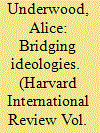

|
|
|
| 2 |
ID:
187121
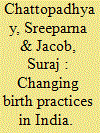

|
|
|
|
|
| Summary/Abstract |
Institutional births increased in India from 39% to 79% between 2005 and 2015. Drawing from 17 months of fieldwork, this article traces the shift from home to hospital births across three generations in a hamlet in Assam in Northeast India. Here, too, one finds that most births have shifted from home to hospital in less than a decade, aided by multiple factors. These include ‘free’ birthing facilities and financial incentives offered by government schemes, idiosyncratic changes within the hamlet, such as the introduction of biomedical practices through home births where oxytocin was used, and changes in cultural belief systems among local people. The exploration reveals significant transitions between (and fluidities of) categories such as local/global, tradition/modernity, past/present and nature/technology, creating a complex and ambivalent narrative of change, in which the voices of mothers should not be ignored.
|
|
|
|
|
|
|
|
|
|
|
|
|
|
|
|
| 3 |
ID:
157191
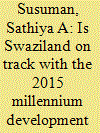

|
|
|
|
|
| Summary/Abstract |
According to the Millennium Development Goals (MDGs) agreement, each participating country has to periodically provide a report that will show the progress on their achievement towards the goals. This article’s aim is to evaluate Swaziland’s prospects of achieving eight MDGs by 2015. This article is an analysis of the current situation of Swaziland, and the aim of this analysis is to look beyond the statistical values to see if the achievements (including lifetime achievements) are on track and whether what is yet to be achieved can really be achieved. Secondary information was collected from various sources. Several countries and organizations have committed themselves to the following eight development goals: (1) eradicate extreme poverty; (2) achieve universal primary education; (3) promote gender equality and empower women; (4) reduce child mortality; (5) improve maternal health; (6) combat HIV/AIDS, malaria and other diseases; (7) ensure environmental sustainability; and (8) develop a global partnership for development. National development is dependent on many factors; therefore, different countries across the world have adopted the MDGs as means of alleviating many of the social ills hindering progress and development. Based on different sources, Swaziland is on track with its MDGs, and there is no doubt that Swaziland will continue to work hard to these ends. It has been argued that there has been progress made that has resulted in significant changes to people’s lives, but the question that has to be asked is how long these achievements can realistically last. A reduction of the rate of child mortality, maternal mortality and HIV/AIDS in Swaziland are needed.
|
|
|
|
|
|
|
|
|
|
|
|
|
|
|
|
| 4 |
ID:
152351
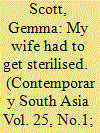

|
|
|
|
|
| Summary/Abstract |
Existing scholarship on the Emergency’s sterilisation programme largely excludes women’s experiences, echoing the Shah Commission of Inquiry’s focus on men’s complaints against the government in its published reports. This paper re-orients historical understandings of this programme to account for female sterilisation during 1975–1977. By reading the Commission’s extensive collection of archived files against the grain, I use the male-dominated archive to illuminate the gendered nature of this policy and its effects on India’s women. Against dominant perceptions that the Emergency’s sterilisation programme focused entirely on vasectomy, this paper discusses instances where women were critical in families’ attempts to negotiate the regime’s coercive measures. It also analyses the negative impacts of coercion on the ‘girl child’ and the consequences of the Emergency’s single minded focus on sterilisation for the Mother and Child Health programme. Through these discussions I argue that such measures exacerbated existing gendered biases. In doing so, this paper challenges dominant understandings of the Emergency’s sterilisation programme and explores women’s experiences.
|
|
|
|
|
|
|
|
|
|
|
|
|
|
|
|
| 5 |
ID:
195474


|
|
|
|
|
| Summary/Abstract |
Postnatal experience is one of the most under-researched areas within medical sociology and anthropology scholarship in India. Using a qualitative lens, this study examines the postnatal experiences of a particular class of working mothers in Bengaluru, one of India’s fastest-growing cities. Through in-depth interviews, the study demonstrates that the postnatal experience of working mothers is layered with social and cultural factors. The findings also revealed that after the delivery, the child is prioritised over the mother, who hardly receives any mental support from her spouse, family members or external network ties. Additionally, these working mothers are often criticised for neglecting motherhood responsibilities and instead focusing on their careers. Expanding the scholarship on postnatal experience, this article highlights the mental agonies and issues faced by working mothers in urban India, as well as in privileged classes.
|
|
|
|
|
|
|
|
|
|
|
|
|
|
|
|
| 6 |
ID:
178684


|
|
|
|
|
| Summary/Abstract |
United Nations Security Council Resolution 1325 highlights the distinct needs of women in security and well-being. Few studies explore how peacekeeping affects women’s access to health and education. Yet, women’s access to public services such as health is a form of gender inequality in post-conflict countries leading to unbalanced distribution of resources. We argue that peacekeeping operations (PKOs) have both a direct and an important indirect impact on maternal health and women’s well-being. First, peacekeeping can have a direct effect by providing medical and training facilities. Second, peacekeeping has an indirect effect as improvement in the overall level of security facilitates women’s access to medical services and education. We evaluate our argument by combining evidence from different levels of analysis. First, we use a difference-in-difference analysis of 45 African countries with data between 1990 and 2013, comparing the changes in maternal mortality rates (MMR) for countries with and without PKOs. Second, we look at within-country variations across areas with and without UN peacekeeping deployment in three countries with integrative PKOs, combining geo-coded peacekeeping data with individual data on maternal health and education from the Demographic and Health Surveys (DHS) in the Democratic Republic of Congo, Côte D’Ivoire, and Liberia. We find strong empirical support for a positive relationship between peacekeeping presence and maternal health outcomes and access to services.
|
|
|
|
|
|
|
|
|
|
|
|
|
|
|
|
| 7 |
ID:
095459
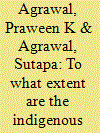

|
|
|
|
|
| Publication |
2010.
|
| Summary/Abstract |
Indigenous populations are the most marginalized and vulnerable communities in India, constituting 8.2% of India's total population, four times larger than the total population of Australia. The state of Jharkhand accounts for 27.7% of the total indigenous population of India. This paper compares the health and socio-economic and demographic indicators among indigenous and non-indigenous women in Jharkhand in terms of 'disadvantage ratio', by exploring the data of 1614 ever-married women (women who are currently married or who have been married at some point in their lives) from India's second National Family Health Survey (NFHS-2), conducted during 1998-99. The study revealed that the indigenous women of Jharkhand were highly disadvantaged in terms of socio-demographic, family planning, and important aspects of maternal health and nutrition compared to non-indigenous women. They were not only disadvantaged within the state in different parameters, but also across the indigenous female population of India as a whole. The findings call for urgent implementation of special health care strategies for reducing health and socio-economic/demographic disparities among the indigenous population of Jharkhand.
|
|
|
|
|
|
|
|
|
|
|
|
|
|
|
|
|
|
|
|
|